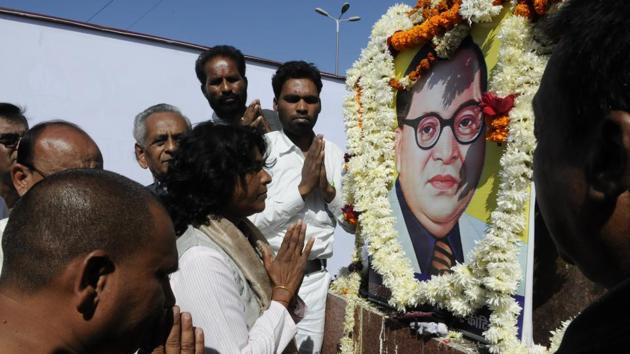Dalits are shut out of history, and also the present
My first brush with caste was when I was about to pass out of school. In my government school, people spoke in hushed tones about students receiving the ‘benefits’ of the reservation system; others bemoaned the death of ‘merit’.
My first brush with caste was when I was about to pass out of school. In my government school, people spoke in hushed tones about students receiving the ‘benefits’ of the reservation system; others bemoaned the death of ‘merit’.

As I went to college and then university, things didn’t change. In addition to surname-dropping, people seem to simultaneously, almost magically, call society casteless and yet restricted themselves to upper-caste groupings.
Even in more progressive spaces, Dalit discourses would be carried out in their absence, as more privileged scholars conveniently filled in their voices with their own.
It isn’t by accident that ‘progressive’ Indians move in caste-exclusive groups, fall in love with people of their same upper sub-caste, are taught by teachers of the same caste, have friends of the same caste and work in offices that are overwhelming upper caste.
Dalits are shut out of history with landmark events — such as the freedom movement or the education movement — becoming exclusive upper-caste projects.
The media buys into this project too: It reduces BR Ambedkar to the framer of our Constitution, erasing his emphatic rejection of caste Hindus and all tropes of Hinduism. This is cleverly done, making identity a dirty one and incompatible with modern Indian values.
Brahmins, though numerically minuscule, are loath to give up on hold on power and education and so any move to level the queered-pitch is shown to be unfair.
Therefore, when reservations touch 50% it seems blasphemous, but no one questions why a section of the population that is in single digits in some states corner more than 50% of the seats in the first place.
Upper-caste allocations are called development but Dalit projects are always seen as handouts. Being caste-less is a misnomer, a luxury allowed only to the upper castes, who can sit atop the social chain, having converted their centuries-old caste gains into modern capital, while only the Dalits are now saddled with the identity.
But caste isn’t gone. It is present in every facet of our lives, though if we look at a string of recent acquittals in caste violence, such as Laxmanpur Bethe, violence is key in the upper-caste design of keeping the Dalit in place.
The 124th Ambedkar Jayanti was marked by political wrangling over the legend’s legacy — their cynical eyes on the Dalit vote-bank — but any true heir to the leader’s work will never be satisfied without annihilation of caste.
Well-meaning upper-caste allies have to work within their communities to rid of the prejudice, beginning with the question why our history books don’t mention the multiple Dalit luminaries and why inter-caste marriages are so few in number.
dhruba.purkait@hindustantimes.com



